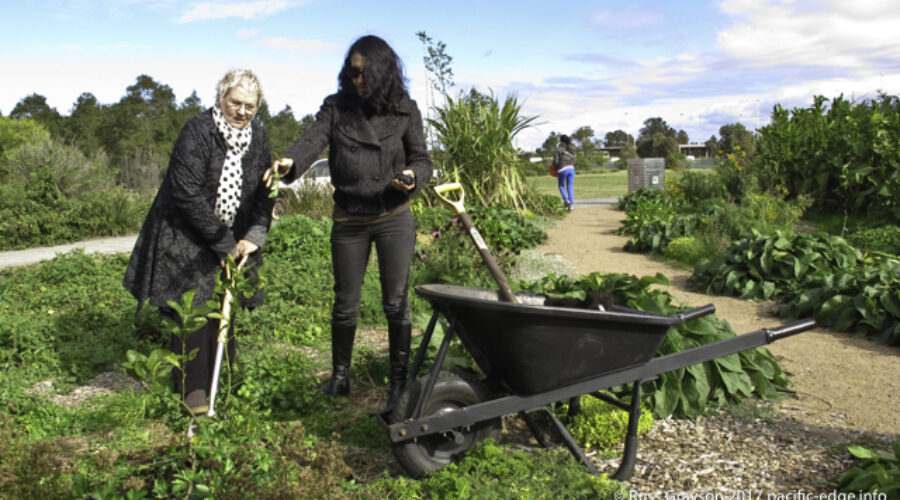Experience the best teacher in the garden
This article was written for PIE — Permaculture Information Exchange — the journal of Permaculture Melbourne.
WHEN ‘Woz the PIE baker’ asked me to write something about experiential capital a couple years ago, I was stumped. So I looked it up online and then, over coffee and a leftover honey cake from yesterday’s meeting I had an idea. Why not write it by telling a story of something that happened?
That story starts with one of my partner, Fiona Campbell’s Forest Gardening courses. Fiona is Randwick City Council’s sustainability educator and she uses the Forest Gardening and Organic Gardening courses to build the forest garden area of the Permaculture Interpretive Garden, a combined regional park/edible landscape/education garden.
Kim was one of the students of the latest Forest Gardening course and, like many, when she started she knew little. She had, however, completed Fiona’s Organic Gardening course and this gave her some basic knowledge. Forest Gardening is intended to be a follow-on from that course.

Kim persisted through the six Saturday afternoons of the course, participating in discussions and small group activities inside the community centre to comprehend the intellectual part of forest garden design and maintenance, then joining the group in the garden. Here, she joined the other students in improving the sandy soil with the addition of compost and biochar. Seeds and seedlings were planted, watered and mulch added.
Then… nothing. A couple classes went by. When Kim and the other students visited the garden you could see the disappointment they felt at the lack of plant growth. It seemed their hopes for a flourishing garden were to be dashed. There were glum faces.. All their soil preparation, watering and planting had been for nought. Their expressions betrayed their frustration.
Then, the following week, Kim burst into the classroom just before class started. She was excited.
“Oh… the garden… the seedlings… they’re up!”.
Last week’s disappointment turned to elation. The seedlings had undergone a sudden growth spurt.
I saw Kim again about a month later.
“That was a great course”, she told me.
“I learned so much… learning about observation in the garden… then understanding what we were doing and going outside to do it”.
“And those sunflower seeds we planted in the swale… they’ve come up and they’ve grown so fast, but will the parrots get the seeds when the flowers form, I wonder”.

Look > Think > Act
Kim has now set out on her own permaculture adventure around the country and what has inspired her to do this was the blending of intellectual learning, the ‘what’ — with practice in the garden, the ‘how’. It’s the blending of these things that makes up experiential capital and makes people more competent and confident in their own abilities. We can see experiential learning as making use of the Action Learning sequence of Look > Think > Act.
But… there’s one more thing that empowered Kim in her new abilities and that is an essential part of learning in developing experiential capital, and it is this — all of her intellectual and practical learning was done in the good company of fellow students who shared their knowledge with each other, what some call ‘social learning’. And it had that other essential quality of all experiential capital building — fun.
Oh, yes, the sunflowers Kim and the others planted did flower. And the parrots never discovered them.


Jane Mowbray
November 17, 2017 at 5:52 amThanks Russ! Now I know what experiential capital is!
Nishat
October 1, 2018 at 12:40 pmGardeners also tend to share the produce they grow, thus improving the vegetable intake of their friends and family and keeping them connected to their social network.